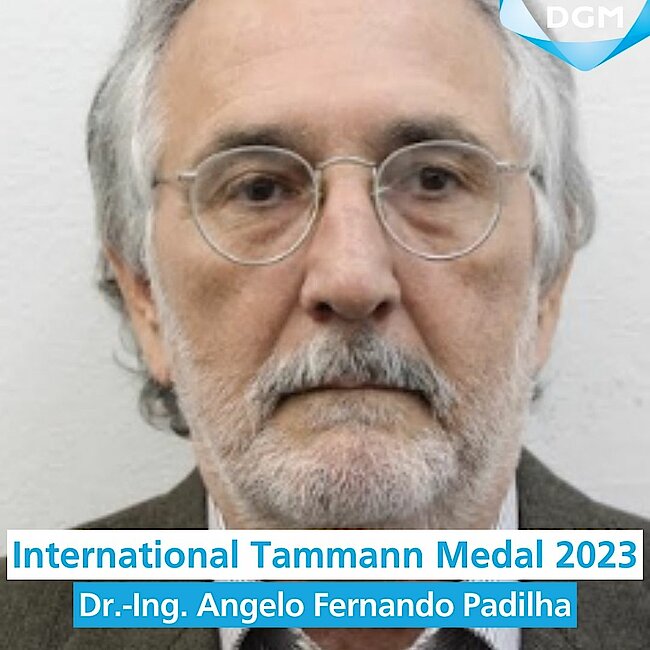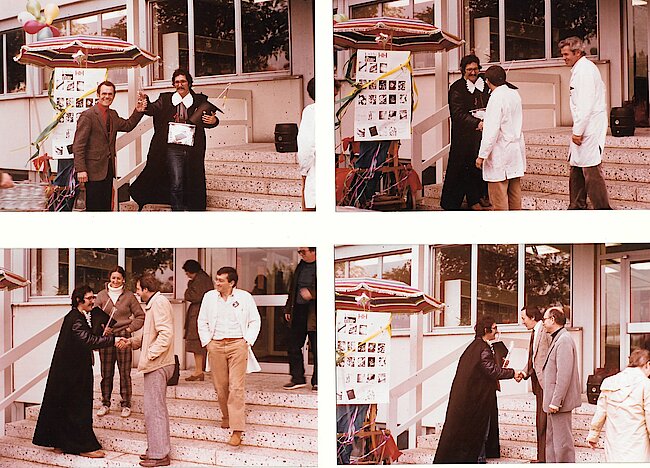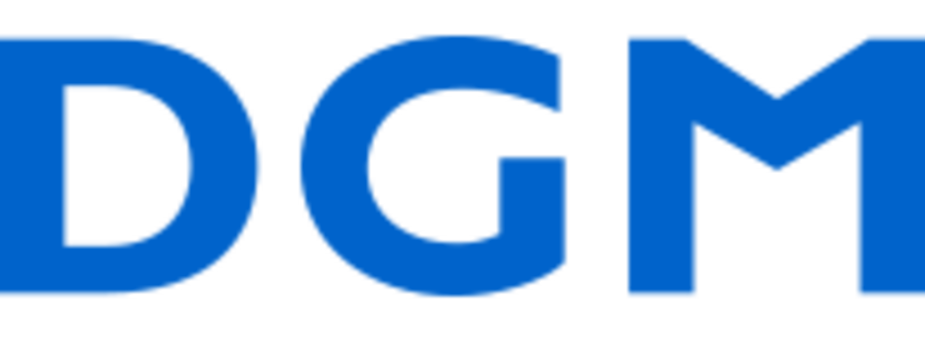

Persönliche Erinnerung: 05. Mai 1981, Prof. Dr. Padhila während der "Empfangs- und Doktorfeier" im Kernforschungszentrum Karlsruhe (Leopoldshafen) kurz nach der Promotionsprüfung an der Universität Karlsruhe.
Die International Tammann Medal wird für herausragende international sichtbare Leistungen auf dem Gebiet der Materialwissenschaft und Werkstofftechnik verliehen. Der Preis erinnert an Gustav Tammann, der die Metallkunde als eine physikalisch-chemische Wissenschaft begründet hat und damit auch international hohes Ansehen erwerben konnte. Mit der International Tammann Medal 2023 ehrt die DGM Prof. Dr.-Ing. Angelo Fernando Padilha, Department of Metallurgical and Materials, Polytechnic School, University of São Paulo (USP).
1. Prof. Padilha, you have contributed significantly to the Brazilian-German cooperation in materials science. What motivated you to initiate this cooperation and how do you see its importance for materials science in both countries?
In 1976, Germany began to send renowned professors to Brazil to give lectures as part of a nuclear agreement recently signed at that time. These German professors came mainly from Aachen-Jülich and Karlsruhe-Leopoldshafen, where Germany's most important nuclear research centres were located. In this context, in mid-1977 Professor Fritz Thümmler arrived at the Nuclear Research Institute in São Paulo (IEA-Instituto de Energia Atômica, currently IPEN-Instituto de Pesquisas Energéticas e Nucleares). Professor Thümmler held a very interesting course on “Materials used in nuclear technology” in São Paulo. At the time I had just finished my M.Sc. thesis and the possibility of studying in Germany was part of my aspirations. In May 1978 I came to Karlsruhe to do my doctorate under the supervision of Professor Thümmler and Dr. Kurt Anderko. The subject of my thesis was the precipitation behaviour in austenitic stainless steel used in the core of the German fast breeder reactor SNR 300. On 05 May 1981, I passed the doctoral examination and in June came back to Brazil. The three years in Karlsruhe were very enriching for me, both professionally and culturally.
2. Your scientific career has taken you from Brazil to Germany and back again. What experiences did you have during your research and teaching stays in Germany and how did they influence your view of materials science?
In 1983, I had the opportunity to spend three months in the research group of Professor Günter Petzow at the Max Planck Institute in Stuttgart. There, I had the chance to follow the pioneering of Leo Lukas and Theo Henig on the thermodynamic optimization of phase diagrams. My stay in Stuttgart, although short, strongly influenced my view and the courses I later offered on phase transformations.
In 1987-1988 I spent two years in the research group of Professor Michael Pohl at the Ruhr-Universität Bochum. Once again, I was lucky enough to be in the right place at the right time! The RUB Institute of Materials was headed by three leading experts in three key and complementary subareas of materials science and engineering: Theoretical Foundations (Professor Erhard Hornbogen); Processing (Professor Hans Berns) and Performance & Failure Analysis (Professor Michael Pohl). I returned to Bochum several times over the next six years. Michael visited me a few times in Brazil and also received several Brazilian students and researchers in Bochum, finally helping me bring renowned German scientists to São Paulo.
I have also maintained a continuous collaboration of more than four decades with colleagues from Karlsruhe, mainly from KfK, later called FZK and currently KIT, and I cannot forget the support of my colleague Edeltraud Materna-Morris.
3. In addition to your scientific activities, you have also held other positions, such as President of the National Commission for Nuclear Energy (CNEN) in Brazil. How do you see the link between scientific research and policy decisions on materials and materials technologies?
Initially, I must mention that Brazil has a significant nuclear program, with activities ranging from uranium mining to the fabrication of fuel elements for nuclear reactors. In addition to mastering the uranium cycle technology, other very relevant applications in health, agriculture and industry benefit millions of human beings in Brazil annually. Furthermore, the Brazilian nuclear program is completely peaceful. Brazil is a signatory to the Treaty of Tlatelolco. The Treaty of Tlatelolco is the conventional name given to the treaty that prohibits nuclear weapons in Latin America and the Caribbean. Unfortunately, few regions of our planet are completely free from atomic weapons.
Finally, to answer your question, the presidency of CNEN was a very challenging experience for me. In addition to the presidency of CNEN, I simultaneously held the presidency of the boards of directors of the two main nuclear industries in Brazil (INB-Indústrias Nucleares do Brasil and NUCLEP-Nuclebrás Equipamentos Pesados). My scientific background was essential to withstand the intense pressure of these tasks and act rationally and reasonably.
4. You have received several awards and honours for your research. What do these awards mean to you personally and how do they motivate you to continue your work? What does the International Tammann Medal mean to you in particular?
I believe that peer recognition is very important for most scientists. In my opinion, the driving force of a scientist is rarely a financial reward. Gustav Tammann, among so many contributions to science and technology, was one of the creators of modern metallurgy in the so-called Göttingen School. I don't know if I deserve it, but the Tammann International Medal awarded by the DGM is the culmination of my modest career as a researcher and professor.
Thank you for the interview.

